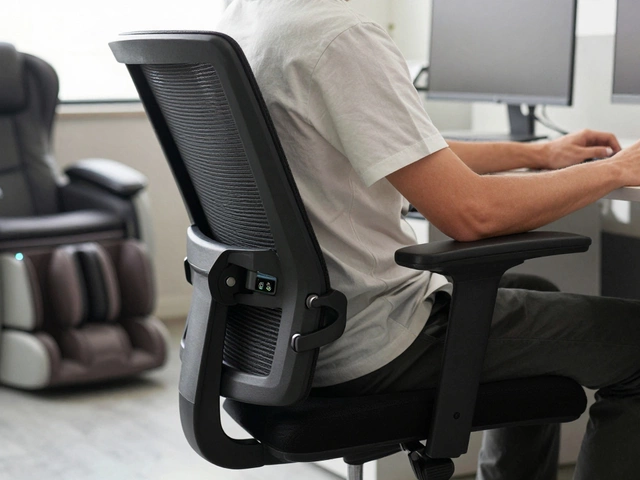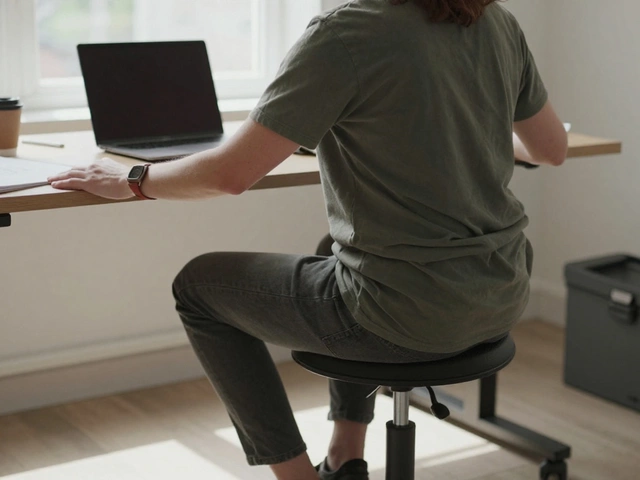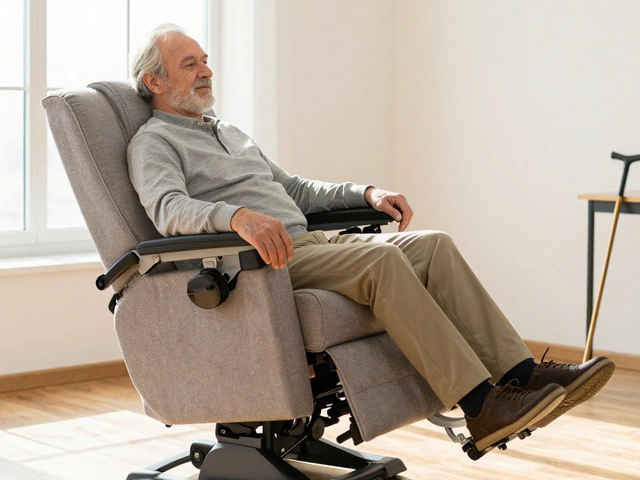Common Ergonomic Mistakes That Hurt Your Body
If you spend a lot of time on a sofa, in a home office, or just lounging around, you’re probably doing a few things that strain your back, neck, or hips. The good news? Most of these habits are easy to spot and even easier to change. Below we break down the biggest slip‑ups and give you quick fixes you can try today.
Bad Sitting Habits on the Couch
Many people treat a couch like a quick nap spot and slouch deep into the cushions. When you curl up with a hunched back, the spine loses its natural curve and pressure builds up in the lower back. Even the cushiest sofa can become a pain point if you sit too low or too far back.
Another common error is crossing your legs or keeping one foot tucked under the couch. This twists the pelvis and forces the hips to work unevenly. Over time, that twist creates tightness in the glutes and can lead to sciatica.
Lastly, leaning forward to watch TV or work on a laptop puts the neck in a forward head posture. Your head weighs about 12 lb, and every inch you push it forward adds a lot of stress to the neck muscles.
How to Fix Everyday Errors
Start by using a firm back cushion or a small lumbar roll to support the natural curve of your lower spine. The roll should sit just above the belly button and keep your hips slightly higher than your knees.
Keep both feet flat on the floor. If the couch is too low, add a small footstool or a sturdy coffee table to rest your feet on. This aligns the hips and reduces the twist that comes from crossing legs.
When you’re watching TV, keep the screen at eye level. You can push the couch a few inches away from the wall or use a wall‑mount to raise the TV. If you’re using a laptop, a lap desk with a stand will bring the screen up and let your elbows stay close to a 90‑degree angle.
Take micro‑breaks every 30‑45 minutes. Stand, stretch, or walk around for a minute. Even a short walk resets the posture muscles and prevents stiffness.
If you love lounging, choose a sofa with firm, supportive seats rather than overly soft cushions. Firm seats keep the pelvis in a neutral position and make it easier to sit upright without hunching.
Finally, be mindful of how you get up and sit down. Use your legs, not your back, to lift yourself. Push off with your feet, straighten your thighs, and then lower yourself onto the couch.
By spotting these ergonomic mistakes and applying the simple fixes above, you’ll feel less achy, stay more comfortable, and protect your body for the long haul. Your couch can be a place to relax, not a source of pain.
Office Chairs That Wreck Your Posture: What to Avoid
Picking the right office chair can make or break your posture. Poorly designed chairs not only cause discomfort but may lead to serious long-term health issues. This article digs into common chair designs that harm posture and offers tips on selecting better options. Avoid the pitfalls of bad seating with practical insights and learn to spot red flags before purchasing.





